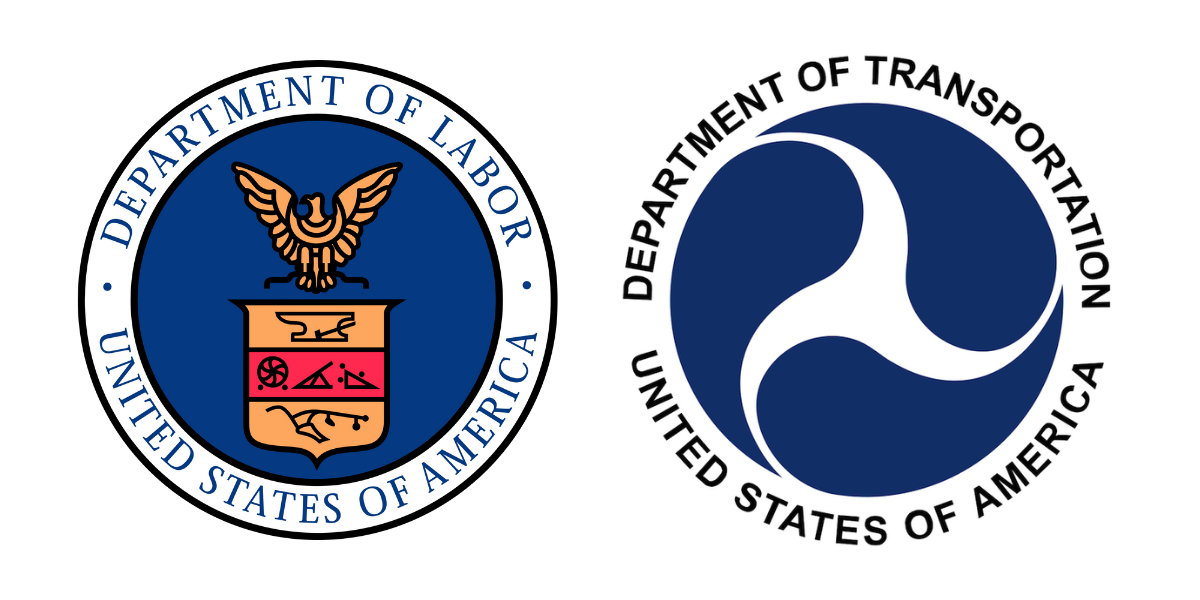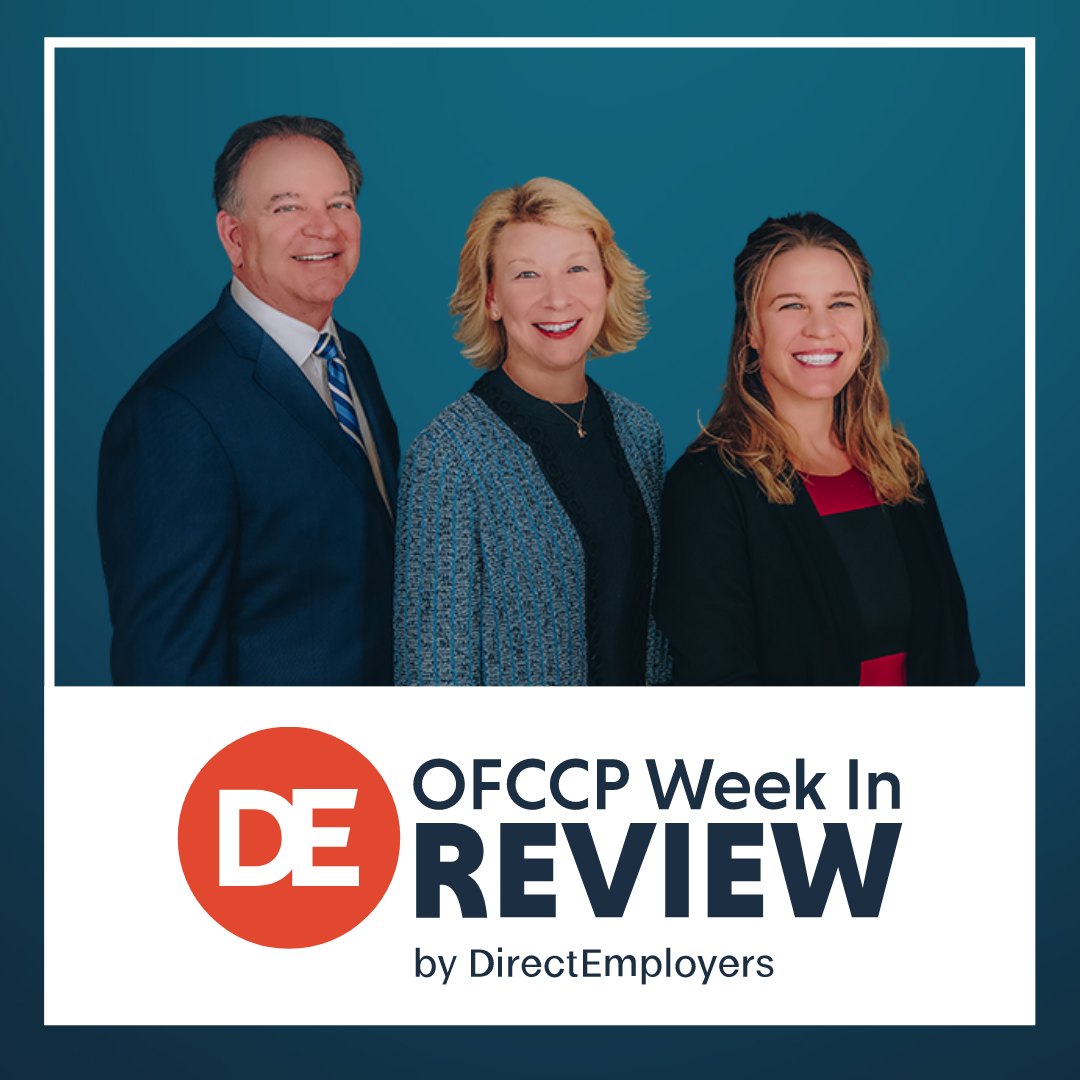
- This Week’s Vaccination Injunction Puzzle at a Glance
- Fifth Circuit Refused to Lift the Lower Court Injunction Which Stopped the Federal Employee Vaccine Mandate as to 35 Naval Combatants
- The 90-Day Trucking Apprenticeship Challenge Nears Completion as the Nation’s Largest Trucking Industry Association Joins the Cause
- USDOL Announced $45M in Grant Funding to Expand Equitable Reskilling & Job Training
- Compensation, Personal Safety, and Racial/Gender Inequalities Addressed in the Driving Good Jobs Initiative
- USDA Seeks To Criminalize Federal Contractor Non-Compliance With Federal Labor Laws
- It was A Big Jobs Gains Month As Workers Begin To End Their Two-Year Sabbatical and Return To Their Jobs. Minority Jobs Gains Noticeable
- New NASWA and DE NLx Research Hub Will Help Employers Recruit, Hire and Train U.S. Workers
This Week’s Vaccination Injunction Puzzle at a Glance
Current Status:
FEDERAL EMPLOYEE VACCINE MANDATE: Department of Defense Vaccine Mandate Case: 5th Circuit Takes Unprecedented Position that Courts May Intervene in President’s Military Powers
Court Refused to Lift Injunction The Lower U.S. District Court Issued To Protect Navy SEALs During Pendency of Litigation
- As the Biden Administration pursues its appeal in U.S. Navy SEALs 1-26, et al. v. Biden, et al., the case that issued an injunction as to military personnel plaintiffs related to the Department of Defense’s vaccine mandate, its request to the Fifth Circuit Court of Appeals seeking immediate relief from the injunction was denied on Monday. The case, previously discussed here, will proceed to hearing before the Fifth Circuit on the merits of the lower court’s decision to issue the injunction before the lower court moves forward with ruling on the underlying case itself (see below).
- Related to vaccine mandates, the Safer Federal Workforce Task Force on Monday issued new mask and testing protocol guidelines for federal employees and the general public who are on-site at federal agency facilities. Masking and screening requirements for appearance at federal agency facilities are now dependent on CDC data related to COVID-19 cases at the community level in the county where such facility is located:
- Agencies do not need to utilize screening testing programs or require mask wearing when COVID-19 Community Levels are low;
- Agencies do not need to require mask wearing, but should maintain screening testing programs, when COVID-19 Community Levels are medium; and
- When COVID-19 Community Levels are high, agencies should require mask wearing and screening testing programs.
- NO NEWS ON OTHER COURT CHALLENGES WE ARE FOLLOWING AS TO PRESIDENT BIDEN’S VACCINATION MANDATES
Monday, February 28, 2022: Fifth Circuit Refused to Lift the Lower Court Injunction Which Stopped the Federal Employee Vaccine Mandate as to 35 Naval Combatants
Court Intruded On This President’s Exercise Of His Authority As Commander In Chief
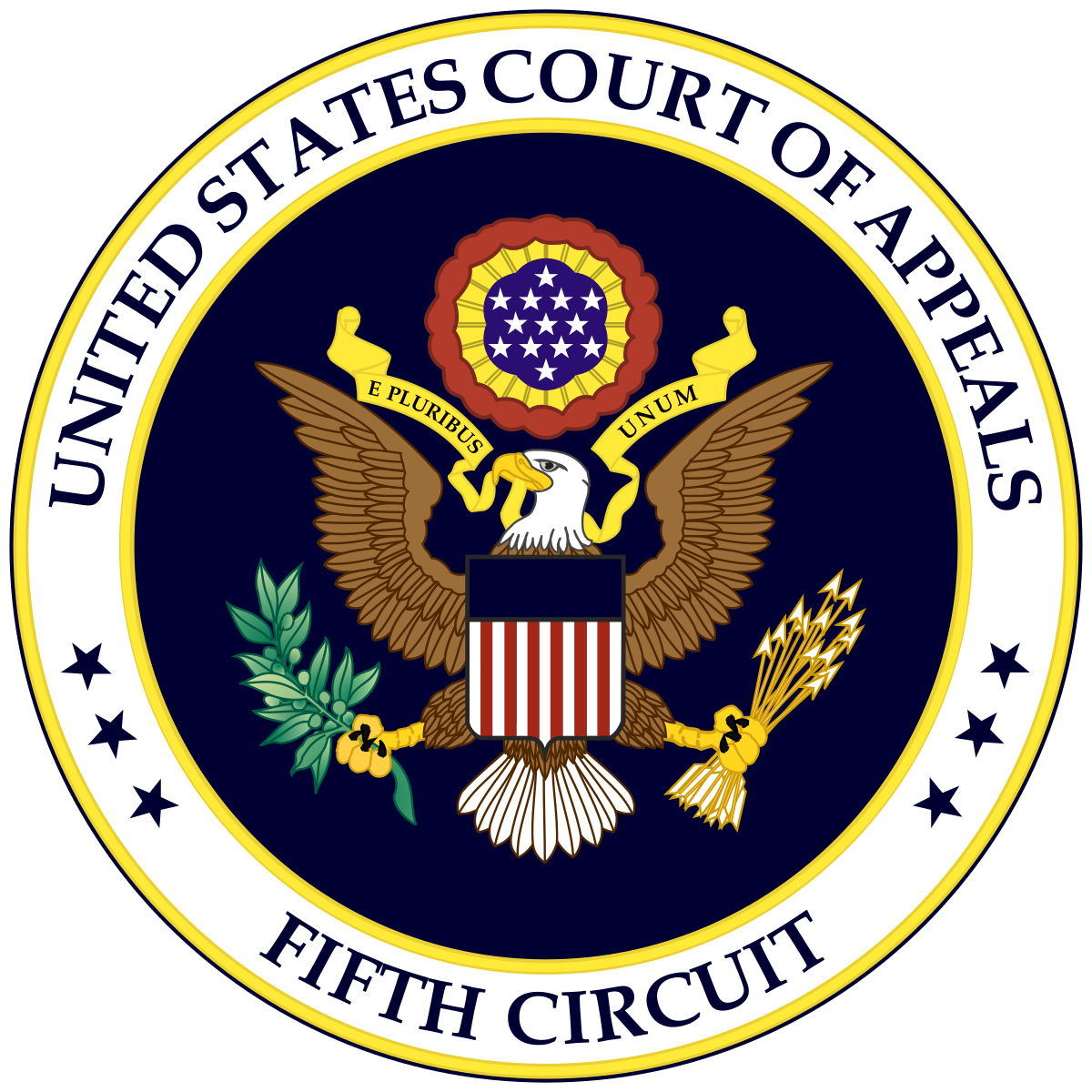
In a Per Curiam (i.e., unanimous) decision, a three-judge panel of the Fifth Circuit on Monday refused to lift an injunction the U.S. District Court for the Northern District of Texas had previously issued. That earlier injunction had stopped the U.S. Department of Defense’s (“DOD”) attempt to discipline 26 U.S. Navy Seals and nine other Navy combat technicians seeking religious accommodations from the DOD’s vaccine mandate.
Thus, the lower (District) court’s previous injunction remains in effect while the underlying merits of the vaccination mandate proceeds through the federal courts. That earlier District Court injunction had stayed DOD’s attempt to discipline the 35 plaintiffs refusing the vaccine mandate on religious grounds.
More importantly, the Fifth Circuit’s refusal to lift the injunction specifically rejected DOD’s argument that military commanders could consider an active-duty military combatant’s vaccination status when “making deployment, assignment and other operational decisions.” The Court’s ruling creates a new form of judicial oversight limiting the President’s long-recognized constitutional authority to make decisions related to our national defense, both as the “employer” of military personnel and as the Commander in Chief of the nation’s armed services personnel.
The Fifth Circuit panel’s ruling comes less than a month after a different Fifth Circuit panel refused to lift the nationwide injunction a lower federal court had issued related to the federal government civilian employee vaccine mandate. President Biden had issued that “vaccinate or terminate” mandate in Executive Order 14043 seizing on his powers as the Chief Executive of the federal government’s Executive Branch of Government (discussed previously: here).
To interfere with a President’s exercise of authority to manage the national defense, the court must either unequivocally (without any substantial doubt) believe that the President lacks the legal authority to act, or that he has poorly exercised any discretion the Constitution or a Congressional statute has delegated to him. As a reviewing court, you really don’t want to be wrong about an issue involving the national defense. To that end, the federal Courts normally bend-over-backwards to defer to the President’s greater national mission, especially since he is operating at the zenith of his delegated Presidential powers when exercising his powers as the Commander in Chief.
This decision was a slap at Joe Biden’s perceived chronic over-reaching of his Presidential authority and role in the triumvirate of the Executive, Congressional and Judicial branches of the federal government. What the Courts are telling President Biden is that just because he is terribly frustrated that he cannot move the Congress to enact his hoped-for domestic policy agenda, rather than just try to “ram it through” he instead needs to “trim sail” given the “dead heat” in the U.S. Senate.
The Fifth Circuit justified its intrusion into the President’s powers to handcuff him as follows:
- First, the Fifth Circuit agreed with the lower court that plaintiffs’ challenge was subject to judicial review given that they had alleged that substantial constitutional violations were at-issue, the plaintiffs’ administrative remedy was futile, plaintiffs faced irreparable harm if the court did not affirm the injunction, and judicial review would not “seriously impede the military in the performance of vital duties.”
- Given that the Fifth Circuit had jurisdiction to consider the matter, it then went on to consider whether plaintiffs had made a sufficient showing to maintain the lower (District) court’s injunction pending DOD’s appeal.
- Upon review, the Fifth Circuit determined plaintiffs (the Navy Seals and their warfare support team members) were likely to succeed on their Religious Freedom Restoration Act claims, lending great weight to the plaintiffs’ declarations and testimony that the vaccination requirement would substantially burden each plaintiff’s free exercise of religion.
- Furthermore, the Fifth Circuit held that the DOD failed to show how religious exemptions for these specific 35 plaintiffs would substantially injure DOD and its naval operations. Specifically, because the very nature of the Plaintiffs’ naval missions included risks of death and injury, potential injury and death from COVID-19 was not a unique concern.
- In contrast, restricting plaintiffs from participating in deployment or military operations because of their religious objections would substantially harm plaintiffs’ First Amendment rights.
Finally, Monday’s ruling emphasizes the importance of our prior suggestions to employers to ensure that any vaccine requirement they install exempt sincerely held religious beliefs in compliance with federal and local civil rights laws.
Tuesday, March 1, 2022: The 90-Day Trucking Apprenticeship Challenge Nears Completion as the Nation’s Largest Trucking Industry Association Joins the Cause
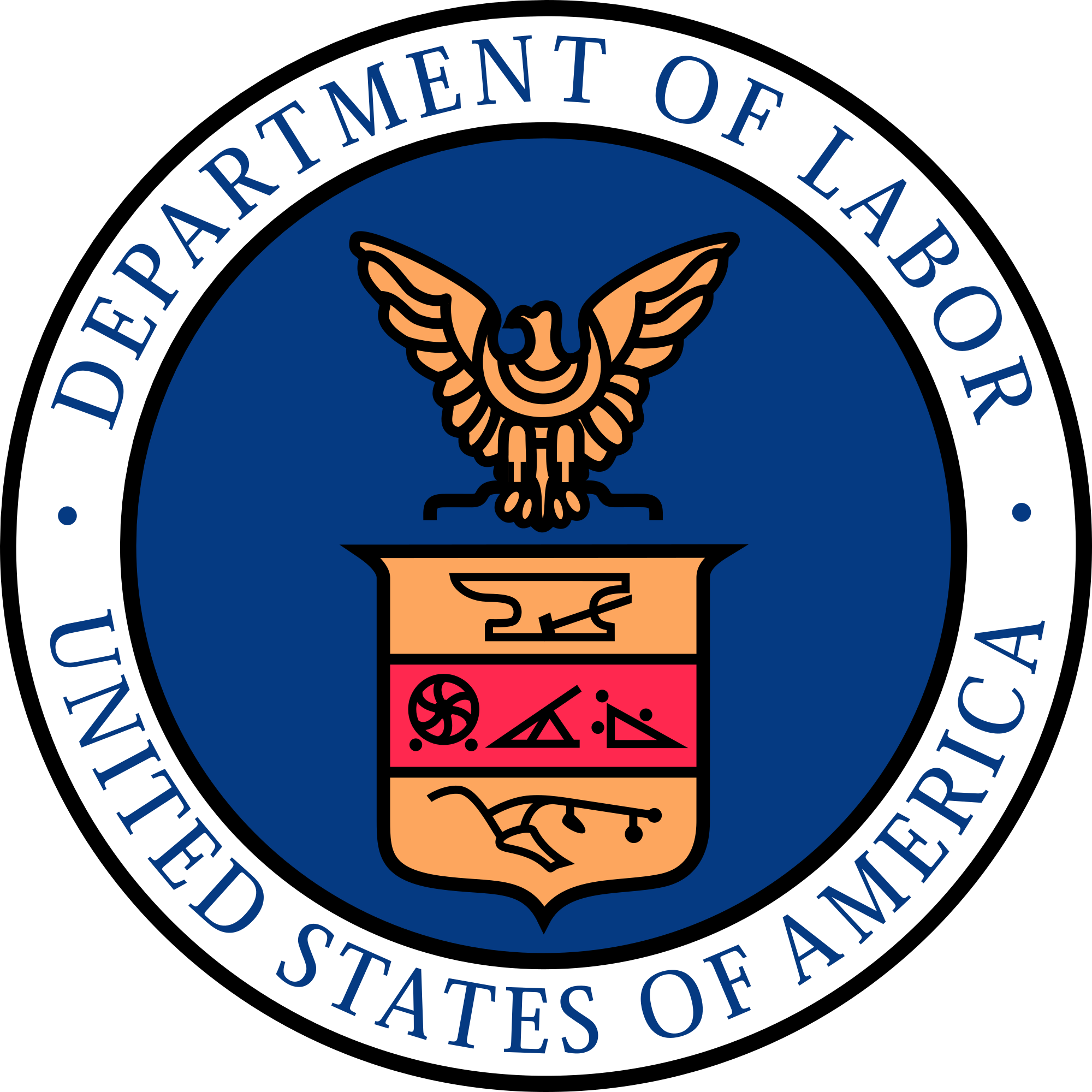
“We appreciate the American Trucking Associations joining the effort to expand Registered Apprenticeships to meet the needs of the nation’s employers while connecting workers to good-paying jobs and a path to middle-class wages and opportunities,” said Secretary Marty Walsh. “What I love about Registered Apprenticeship is that it is a partnership. When employers and industry step up, we are ready to partner and support them to adopt this high-road training model to meet their critical workforce needs,” he added.
The 90-day challenge (which ends March 18th) is one of many initiatives from the Trucking Action Plan to Strengthen America’s Trucking Workforce. The Driving Good Jobs Initiative also launched this week and is covered under Thursday’s events below.
Wednesday, March 2, 2022: USDOL Announced $45M in Grant Funding to Expand Equitable Reskilling & Job Training

This is the second round of funding from the Strengthening Community Colleges Training Grants Program (launched in January of 2021 with an initial $40 million). The grants allow public and state institutions of higher education and community colleges – individually or collectively – to improve their ability to address equity gaps and meet the skills development needs of employers and employees. The department will award grants of up to $1.6 million for single institutions and up to $5 million for consortiums, with up to $5 million designated to fund at least one affinity consortium grant.
Thursday, March 3, 2022: Compensation, Personal Safety, and Racial/Gender Inequalities Addressed in the Driving Good Jobs Initiative
Deputy Secretary of Labor Julie Su hosted an online media event billed as a “listening session” with members of the International Brotherhood of Teamsters to discuss strategies to improve the quality of trucking jobs to aid in recruiting and retaining drivers. USDOL did not invite the truck driving industry to this “listening session,” however, even though the trucking companies are the ones in control of all of the topics discussed at the session. Those topics included the misclassification of drivers as independent contractors, better compensation for drivers, support for collective bargaining, and enhanced industry training and safety standards.
Stakeholders emphasized the importance of addressing perceived racial and gender inequities in the industry, and increasing outreach to drivers of color and women, with a focus on personal safety to attract more women to the industry. The session did not discuss, however, how more outreach would help as the number of available and unfilled over-the-road trucking jobs has grown in the last three years by over 33% from 61,000 to a record high of over 80,000. Nor did the listening session discuss the need to train new drivers to fill the 1 million new over-the-road truck driving jobs the American Trucking Associations projects in the next 9 years alone. Supply of trucking jobs is not the issue: the need to further increase the supply of truck drivers willing and qualified to take long haul jobs is the issue as the trucking industry continues to grow driver jobs.
According to a November 12, 2021 Time magazine article:
“There were 1.5 million people employed in trucking last month, according to the Bureau of Labor Statistics, just 1% fewer than in October 2019, and 15% more than a decade ago. That’s a faster growth rate than overall nonfarm employment, which is still down 2% from October 2019 and up only 12% from a decade ago.
The USDOL listening session followed the recent announcement of a partnership between the Departments of Labor and Transportation as part of the Driving Good Jobs Initiative. The Initiative, however, duplicates the existing mission of USDOL’s Employment & Training Administration, or in some cases the role and responsibility of The U.S. Congress. The Initiative, directed from the Biden-Harris Administration’s Trucking Action Plan to Strengthen America’s Trucking Workforce includes:
- hosting listening sessions that bring together drivers, unions, industry experts, and industry advocates;
- identifying best practices that support job quality and driver retention that can be scaled;
- studying the issue of truck driver pay and unpaid detention time;
- identifying effective and safe strategies to get new entrants in the field from underrepresented communities (specifically women and young drivers between the ages of 18-20);
- setting up a task force to investigate predatory truck leasing arrangements; and
- identifying longer-term actions, such as potential administrative or regulatory actions that support drivers and driver retention by improving the quality of trucking jobs.
On A Related Note
Thursday, February 17, 2022: USDA Seeks To Criminalize Federal Contractor Non-Compliance With Federal Labor Laws
Agriculture Department Seeks To Revive The Obama “Blacklisting Rule” Requiring Federal Contractors to “Certify” Compliance With 15 Federal (and an unknown number of state TBD) Labor Laws
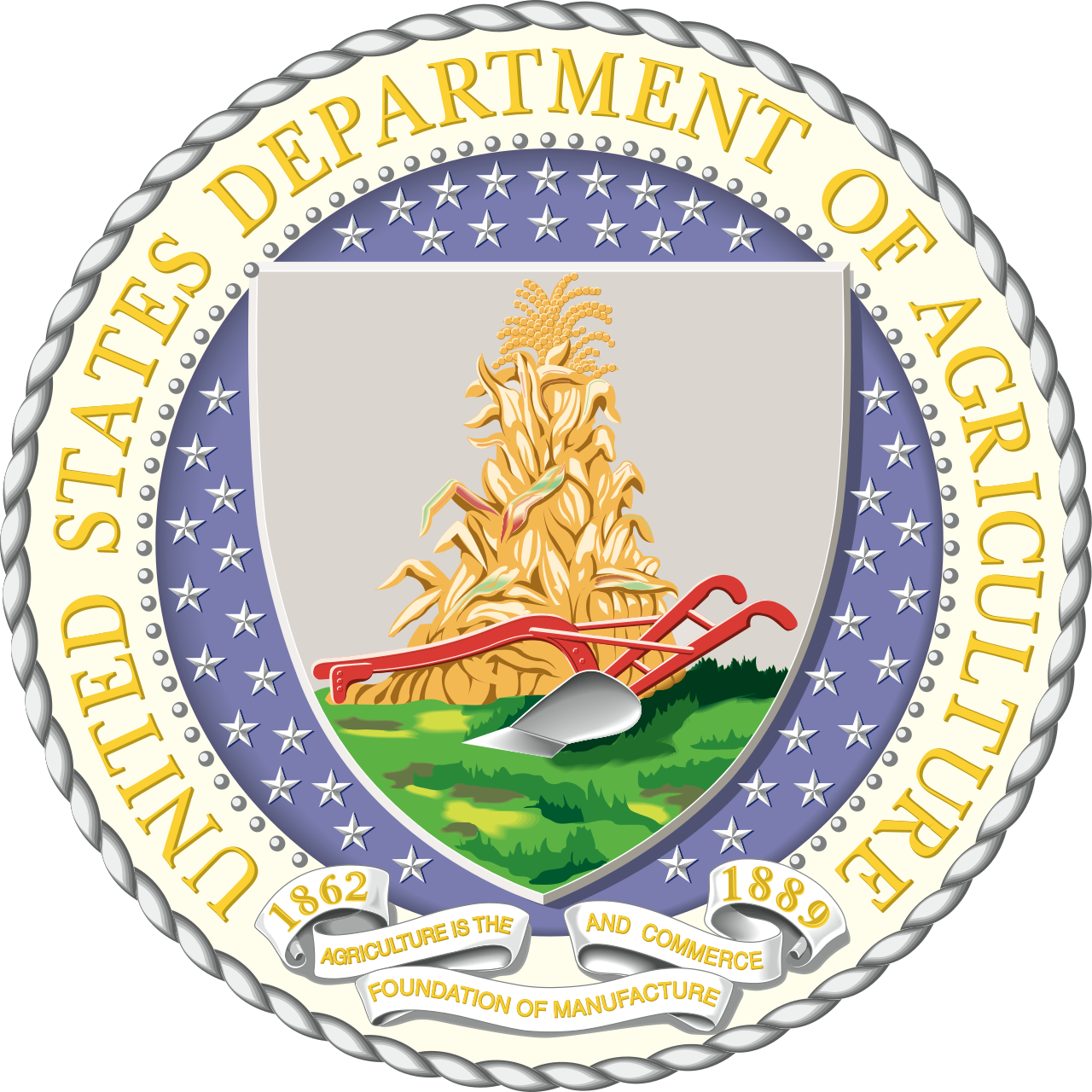
What Just Happened?
USDA published a Proposed Rule seeking to require every company with a contract or subcontract (undefined) with USDA to “certify” “…that it is in compliance with all applicable labor laws and that, to the best of its knowledge, its subcontractors of any tier, and suppliers, are also in compliance with all applicable labor laws.” See proposed new contract clause 452.22-70 [“Labor Law Violations (Month Year)”] of the Proposed Rule. We recite verbatim below the 15 “applicable” federal laws and the reference to unknown and unidentified state laws to be identified via Notices from the U.S. Secretary of Labor (really…not making this up). The USDA Proposed Rule apparently leaves the determination whether a USDA contractor is subject to the fifteen federal and whatever state laws USDOL will identify to the federal or state agencies charged to enforce the statutes. However, that critical point is not discussed in the Proposed Rule or how a company would certify compliance with a statute which does not extend coverage to the company.
First, the called for certification requires the Contactor to affirmatively state “it is in compliance.” And, of course, that certification comes subject to criminal and civil sanctions for “knowingly and willingly” making a materially false or misleading statement to the federal government pursuant to 5 U.S.C. Section 1001. That section also makes a person liable under this law if s/he “makes or uses any false writing or document knowing the same to contain any materially false, fictitious, or fraudulent statement or entry.” 5 U.S.C. Section 1001 (a) requires that offenders “shall be fined under this title, imprisoned not more than 5 years…”
The USDA Proposed Rule also specifically states: “The Department of Agriculture considers certification under this clause to be a certification for purposes of the False Claims Act.” (See bottom of first full para of proposed new contract clause 452.222-70). The False Claims Act (FCA), 31 U.S.C. §§ 3729 – 3733 imposes a civil penalty of not less than $5,000 and not more than $10,000 (as adjusted from time to time by the Federal Civil Penalties Inflation Adjustment Act of 1990 (28 U.S.C. 2461 note; Public Law 104–410) plus 3 times the amount of damages which the Government sustains because of the act of that person for a variety of offenses, including (A) “knowingly presents, or causes to be presented, a false or fraudulent claim for payment or approval;” or (B) “knowingly makes, uses, or causes to be made or used, a false record or statement material to a false or fraudulent claim;” or conspires to commit a violation of subparagraph (A) and/or (B).
Second, the proposed USDA Rule requires the contractor to certify, but only to “the best of its knowledge” that the contractor’s subcontractors are in compliance with all applicable labor laws. Note that proposed Rule would not require the contractor to make an affirmative inquiry of its subcontractors or to search or launch an investigation of its subcontractors (regardless of how the Rule eventually defines what suppliers are covered “subcontractors”). So, this is a case where “less is more.”
Monday, March 21, 2022, Is The Last Day You May Comment On USDA’s Proposed Rule
Here Is The Other Fine Print Detail.
“The Department of Agriculture will vigorously pursue corrective action against the contractor and/or any tier subcontractor (or supplier) in the event of a violation of labor law(s) made in the provision of supplies and/or services under this or any other government contract. The contractor is responsible for promptly reporting to the contracting officer if and when adjudicated evidence of noncompliance occurs. * * *The Department will cooperate as appropriate regarding labor laws applicable to the contract which are enforced by other agencies.” [EDITOR’S NOTE: So, USDA contract officers are also going to “cooperate” (i.e., “drop a dime on you”) with other federal agencies which enforce the laws to which you are certifying compliance.]
* * * * *
“The contractor and any subcontractors shall incorporate into lower tier subcontracts a requirement that the information described above be provided to the contractor.”
Here Are The 15 Federal (and a wildcard number of State) Labor Laws As To Which USDA Wants You To Certify Your Company’s Compliance.
Applicable Labor Laws include:
- The Fair Labor Standards Act;
- The Occupational Safety and Health Act;
- The Migrant and Seasonal Agricultural Workers Protection Act;
- The National Labor Relations Act;
- The Davis-Bacon Act;
- The Service Contract Act;
- Executive Order 11246 (Equal Employment Opportunity);
- Section 503 of the Rehabilitation Act of 1973;
- The Vietnam Era Veterans’ Readjustment Assistance Act;
- The Family and Medical Leave Act;
- Title VII of the Civil Rights Act of 1964;
- The Americans with Disabilities Act of 1990;
- The Age Discrimination in Employment Act of 1967;
- Executive Order 13658 of February 12, 2014 (Establishing a Minimum Wage for Contractors);
- Equivalent State laws, as defined by the Secretary of Labor in guidance.
- Executive Order 13627 (Strengthening Protections Against Trafficking in Persons in Federal Contracts)
How We Got Here
July 2014: President Obama signed Executive Oder 13673, “Fair Pay & Safe Workplaces” (aka “The Blacklisting Rule”) in which:
“For procurement contracts for goods and services, including construction, where the estimated value of the supplies acquired and services required exceeds $500,000, each agency shall ensure that provisions in solicitations require that the offeror represent, to the best of the offeror’s knowledge and belief, whether there has been any administrative merits determination, arbitral award or decision, or civil judgment, as defined in guidance issued by the Department of Labor, rendered against the offeror within the preceding 3-year period for violations of any of the following labor laws and Executive Orders (labor laws)…”
In other words, Congress did not give the President authority to promulgate the public labor law violation disclosure requirements and contract disqualification sanctions. [Note: It is hard to imagine how the new USDA proposed Rule would not be equally as infirm and illegal as the broader – in reach of contracts covered by the Obama Blacklisting Rule, and for the same reasons this federal Court relied upon to strike down the Obama Rule which has served as an exact template for the USDA Rule.]
April 2017: “Trump Signs into Law the Congressional Resolution to Kill Obama’s Dreaded “Blacklisting Rule“
It is done. The Fair Pay and Safe Workplaces Executive Order and the FAR Council’s implementing Rules were withdrawn and were no longer legally effective. As we reported here, the Senate passed Joint Resolution 12 on March 6, 2017 revoking Obama Executive Order 13673 pursuant to the Congress’ authority pursuant to the Congressional Review Act. The effect of a Congressional Review Act disapproval of an Executive Branch Order or Rule (which can only occur on majority votes of disapproval by both Houses of Congress) is that the Executive Branch may not again pursue the same or similar Order or Rule without first obtaining the Congress’ explicit prior approval. [NOTE: It is hard to imagine how the new USDA proposed Rule would not now ALSO violate Senate Joint Resolution 12 since the USDA Proposed Rule contains the same substance as the Obama Order and Rules albeit reduced to just USDA contracts, even if not all federal Executive Branch contracts. But, if you cannot do the greater, you cannot do the lesser].
Also see the November 6, 2017 Federal Register Notice titled: Guidance for Executive Order 13673, “Fair Pay and Safe Workplaces” reporting the wind-up of the Obama Executive Order.
Friday, March 4, 2022: It was A Big Jobs Gains Month As Workers Begin To End Their Two-Year Sabbatical and Return To Their Jobs. Minority Jobs Gains Noticeable
Employment Edges Its Way Back to 2021 Levels, Though Still Not To Pre-Pandemic Levels

These numbers now fall back in line with 2021 jobs reports when job growth averaged 537,000/month and we ended the year at a 3.9% unemployment rate. However, the size of the U.S. labor market is still down by a stunning 2.1 million workers, or 1.4% from its pre-pandemic size in February 2020.
Two Steps Forward, One Step Back: The Good Job Gains Data Gets Tempered a Bit
Moreover, job losses continue to be high and offset job gains. In January 2022, for example (the latest job loss data available), 301,000 workers quit their jobs. February 2022 job losses are expected to be as high as January, if not higher. Winning the hearts and minds of these departing employees to stay or to return to work remains the challenge for employers in 2022.
In February, employment continued to trend up in leisure and hospitality (+179,000) and professional and business services (+95,000). Almost all industries experienced an uptick including health care (+64,000), construction (+60,000), and transportation & warehousing (+48,000).
Employment showed little or no change in the information and government sectors.
Black, Asian, Hispanic, Male and Veteran worker classifications all showed greater decreases in their unemployment percentages (from .3% to .5%) than Whites (down only .1% this month) and women (unemployment percentage change was flat). Indeed, Veterans, at now only a 3.2% unemployment percentage, knocked Whites (whose unemployment percentage dropped to 3.3%) out of the top spot for the lowest unemployment percentage this month.
|
The Employment Situation – February 2022 |
||||
| Unemployment Rate | Feb 2022 | Jan 2022 | Feb 2021 | Feb 2020 Pre-Pandemic |
| National (Seasonally adjusted) |
3.8% | 4.0% | 6.2% | 3.5% |
|
Women (20+) |
3.3% 6.6% 3.1% 4.4% 3.5% 3.6% |
3.4% 6.9% 3.6% 4.9% 3.8% 3.6% |
5.5% 9.8% 5.1% 8.4% 6.0% 5.9% |
3.0% 6.0% 2.5% 4.4% 3.2% 3.1% |
| Veterans (Not seasonally adjusted) |
3.2% | 3.8% | 5.5% | 3.7% |
| Individuals with Disabilities (Not seasonally adjusted) |
8.8% | 9.1% | 12.6% | 7.8% |
See Also
Friday, March 4, 2022: New NASWA and DE NLx Research Hub Will Help Employers Recruit, Hire and Train U.S. Workers
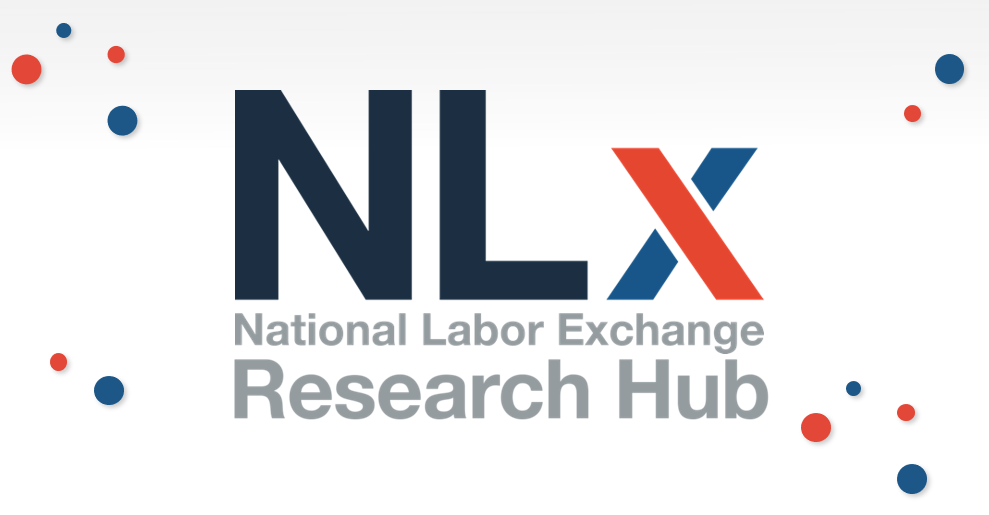
The National Labor Exchange (NLx) Data Trust created the NLx Research Hub to:
- Increase the amount of actionable real-time labor market information in the U.S. to facilitate the recruitment, hiring, and training opportunities of U.S. workers; and
- Deepen partnerships between industry, government, and academia by enhancing the infrastructure to support the convergence of research, education, and talent pipelines.
But what is the NLx Research Hub? Here is how NASWA explains it:
“The National Labor Exchange (NLx) Research Hub is a national, open ecosystem of real-time and historical labor market information. Analysts from state workforce agencies, academic institutions, nonprofit research organizations, and others can use data from the NLx Research Hub to improve connections between jobseekers, employers, and policymakers. The goals of the NLx Research Hub are to (1) increase the amount of actionable labor market information in the U.S. to facilitate the recruitment, hiring, and training opportunities of U.S. workers; and (2) deepen partnerships between industry, government, and academia by enhancing the infrastructure to support convergent research.”
What Data Are Available?
[Editor’s Note: I just love it that NASWA uses data in the plural per The New York Times Manual of Style and Usage Guide]. The NLx, a partnership between the National Association of State Workforce Agencies (NASWA) and DirectEmployers Association, has provided a public-private job board since 2007. In that time, the NLx has supported state labor exchange systems while compiling over 75 million unique job postings. The NLx Research Hub enables access to these job posting records for research purposes. Each job posting record includes a unique identifier, job title, date, location (city, state, and zip code), and full job description. Data users may also request access to the O*NET occupational codes associated with each job posting.
Acronym Dictionary
NASWA: the National Association of State Workforce Agencies, the trade association representing the interests of the nation’s state workforce agencies.
DirectEmployers Association (DE): a non-profit trade association headquartered in Indianapolis, and its partner NASWA, created the National Labor Exchange (NLx) to assist its almost 1,000 Member companies daily list and post available jobs with the state workforce agencies and to offer recruitment, outreach, and other compliance services.
NLx: a robust resource for employers and state workforce agencies to connect workers with job openings. The powerful tool also connects state and federal agencies, nonprofit and Veteran organizations, as well as disability and diversity partners to assist employers with recruitment goals. The NLx provides the cleanest, unduplicated, and most robust pipeline of jobs in the country as it only comes from three sources: employers, state workforce agencies and USAjobs.gov.
THIS COLUMN IS MEANT TO ASSIST IN A GENERAL UNDERSTANDING OF THE CURRENT LAW AND PRACTICE RELATING TO OFCCP. IT IS NOT TO BE REGARDED AS LEGAL ADVICE. COMPANIES OR INDIVIDUALS WITH PARTICULAR QUESTIONS SHOULD SEEK ADVICE OF COUNSEL.
SUBSCRIBE.
Compliance Alerts
Compliance Tips
Week In Review (WIR)
Subscribe to receive alerts, news and updates on all things related to OFCCP compliance as it applies to federal contractors.
OFCCP Compliance Text Alerts
Get OFCCP compliance alerts on your cell phone. Text the word compliance to 55678 and confirm your subscription. Provider message and data rates may apply.

